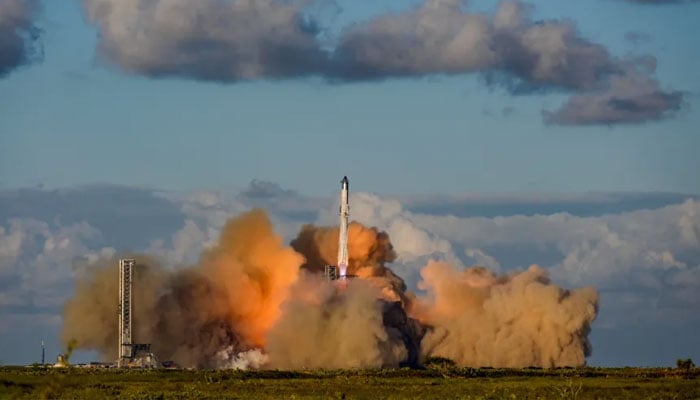
A towering first-stage booster for an upgraded version of SpaceX’s Starship rocket suffered a failure in predawn testing in Texas on Friday, potentially complicating the company’s effort to demonstrate the rocket’s lunar landing capabilities to NASA, according to observers who captured it on video.
Elon Musk’s SpaceX had brought the upgraded stainless steel Super Heavy booster to a test pad Thursday at the company’s Starbase rocket facility, saying it intended to test its redesigned booster systems and their structural strength.
During a test on the pad around 4 a.m. CT on Friday, a zoomed-in live video feed, opens a new tab from the SpaceX LabPadre observation group showed that the booster suddenly folded and released a cloud of gas from its sides, indicating that an explosion had opened its exterior.
SpaceX, in a statement, acknowledged what it called an “anomaly during pressure testing of the gas system” and said there were no injuries. The mishap, SpaceX said, occurred before testing the structural strength of the booster.
“Teams need time to investigate before we are sure of the cause,” the company said.
SpaceX had hoped to fly the booster, as well as its Starship upper stage that did not participate in Friday’s test, early next year for the company’s 12th Starship flight demonstration since 2023. Friday’s mishap is likely to impact that goal.
Spacecraft central to the lunar race
The company has faced pressure from NASA to advance its breakneck Starship development program into a new phase of testing involving features related to the rocket’s future moon landings, a pair of multibillion-dollar missions for the U.S. space agency that would put the first humans on the lunar surface since 1972.
The mission has made Starship a central component of the U.S. lunar program, which is increasingly under pressure to achieve a landing before China does around 2030. NASA’s acting and potential leadership camps have argued over the best way to return humans to the moon as China’s space program advances.
The booster that crashed Friday was the first for Starship V3, an iteration of the rocket that SpaceX says includes a number of new designs and features related to the lunar program.
SpaceX is known for rapidly producing multiple iterations of boosters as part of its capital-intensive ethos of test-to-fail rocket development. But it was unclear whether it had another V3 booster with which it could resume testing, or by how many months the mishap could delay the Starship program.
Of Starship’s five flight tests this year, the first three suffered complex and explosive setbacks before SpaceX resumed steady development progress in August, resulting in a bumpy year. Starship’s final flight in October was the final test before SpaceX moved on to building the V3 version, which it hoped to fly in February 2026.
Starbase, SpaceX Starship’s sprawling facility in South Texas, has had multiple test explosions in the past. A Starship booster exploded in a giant fireball at its test pad in June, sending debris across the US-Mexico border two miles (3.22 km) away and sparking political tension with the country’s president.



